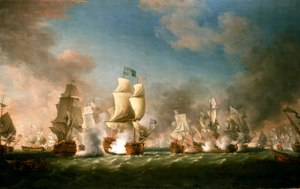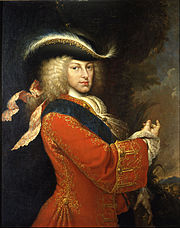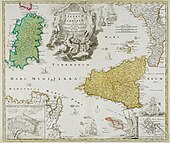
Giulio Alberoni was an Italian cardinal and statesman in the service of Philip V of Spain.
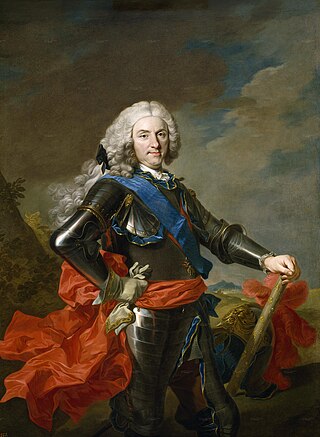
Philip V was King of Spain from 1 November 1700 to 14 January 1724 and again from 6 September 1724 to his death in 1746. His total reign is the longest in the history of the Spanish monarchy, surpassing Philip II. Philip V instigated many important reforms in Spain, most especially the centralization of power of the monarchy and the suppression of regional privileges, via the Nueva Planta decrees, and restructuring of the administration of the Spanish Empire on the Iberian Peninsula and its overseas regions.
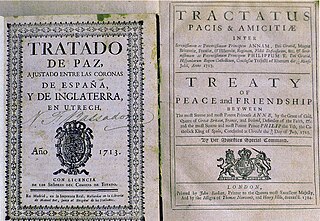
The Peace of Utrecht was a series of peace treaties signed by the belligerents in the War of the Spanish Succession, in the Dutch city of Utrecht between April 1713 and February 1715. The war involved three contenders for the vacant throne of Spain, and involved much of Europe for over a decade. The main action saw France as the defender of Spain against a multinational coalition. The war was very expensive and bloody, and finally stalemated. Essentially, the treaties allowed Philip V to keep the Spanish throne in return for permanently renouncing his claim to the French throne, along with other necessary guarantees that would ensure that France and Spain should not merge, thus preserving the balance of power in Europe.
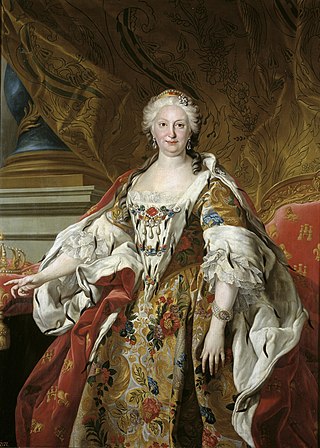
Elisabeth Farnese was Queen of Spain by marriage to King Philip V. She was the de facto ruler of Spain from 1714 until 1746 since she managed the affairs of state with the approval of her spouse, and is particularly known for her great influence over Spain's foreign policy. From 1759 until 1760, she governed as regent.
The Triple Alliance was a defence pact signed on 4 January 1717 in The Hague between the Dutch Republic, France and Great Britain, against Bourbon Spain in an attempt to maintain the agreements of the 1713–15 Peace of Utrecht. The three states were concerned about Spain becoming a superpower in Europe. As a result, militarisation took place and caused great havoc to civilians. That enraged Spain and other states and led to brinkmanship. The alliance became the Quadruple Alliance the next year, after the accession of Holy Roman Emperor Charles VI.
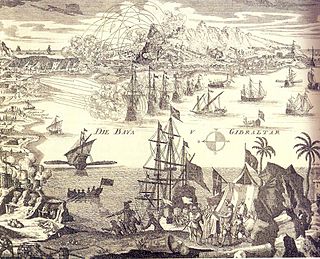
The Treaty of Seville was signed on 9 November 1729 between Britain, France, and Spain, formally ending the 1727–1729 Anglo-Spanish War; the Dutch Republic joined the Treaty on 29 November.
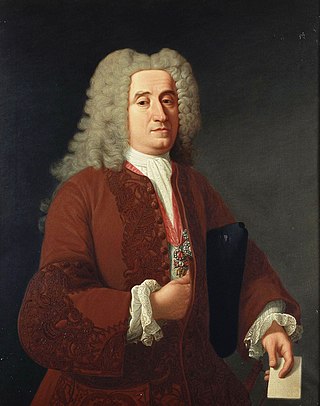
Don José Patiño y Rosales was a Spanish statesman who served as acting First Secretary of State of Spain from 1734 to 1736.
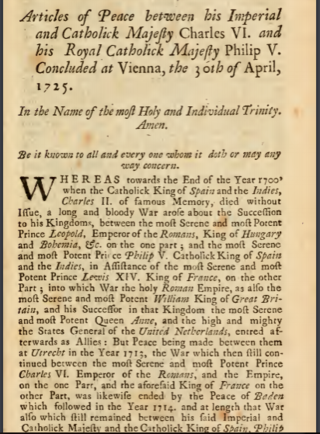
The Peace of Vienna, also known as the First Treaty of Vienna, was a series of four treaties signed between 30 April 1725 and 5 November 1725 involving the Habsburg Monarchy, the Holy Roman Empire, and Bourbon Spain. Later, in 1726, the Russian Empire joined this newly formed alliance. The signing of this treaty established the Austro-Spanish Alliance, which led to the Fourth Anglo-Spanish War (1727-1729). This alliance caused Austria to withdraw from the Quadruple Alliance. In this new partnership, the Habsburgs gave up all formal claims to the Spanish throne, while Spain renounced its claims to the southern Netherlands and several other territories.

The 1731 Treaty of Vienna was signed on 16 March 1731 between Great Britain and Emperor Charles VI on behalf of the Habsburg monarchy, with the Dutch Republic included as a party.

The 1720 Treaty of The Hague was signed on 17 February 1720 between Spain and the Quadruple Alliance, established by the 1718 Treaty of London. Its members included Britain, France, the Dutch Republic and Austria.
Jean François de Bette, 3rd Marquess of Lede was a Belgian military commander in Spanish service. He was also lord of the Fiefdom of Lede in Flanders.
The Battle of Milazzo was fought on 15 October 1718 near the city of Milazzo in Sicily, Italy between Spain and Austria as part of the War of the Quadruple Alliance.
The Battle of Francavilla was fought on 20 June 1719 near the city of Francavilla di Sicilia in Sicily, Italy between Spain and Austria as part of the War of the Quadruple Alliance.
The Anglo-French Alliance is the name for the alliance between Great Britain and France between 1716 and 1731. It formed part of the stately quadrille in which the Great Powers of Europe repeatedly switched partners to try to build a superior alliance.
The Cellamare conspiracy of 1718 was a conspiracy against the Regent of France, Philippe d'Orléans (1674–1723) that aimed to depose him of his position and place Philip V, then King of Spain, as the new regent of France. Concocted in Spain, the plot was the brainchild of Antonio del Giudice, Prince of Cellamare.

The Kingdom of Sicily was ruled by the House of Savoy from 1713 until 1720, although they lost control of it in 1718 and did not relinquish their title to it until 1723. The only king of Sicily from the House of Savoy was Victor Amadeus II. Throughout this period Sicily remained a distinct realm in personal union with the other Savoyard states, but ultimately it secured for the House of Savoy a royal title and a future of expansion in Italy rather than in France. During this period, the Savoyard monarch used his new title to affirm his sovereign independence.
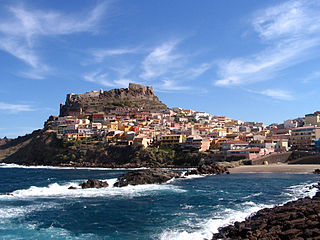
The Spanish conquest of Sardinia, also known as the Spanish expedition to Sardinia, took place between 22 August 1717 and 30 October 1717. It was the first military action between the Kingdom of Spain and the Holy Roman Empire after the War of the Spanish Succession (1701–1714), and was the direct cause of the War of the Quadruple Alliance (1718–1720). The Spanish troops commanded by the Marquis of Lede and Don José Carrillo de Albornoz, 1st Duke of Montemar, supported by the Spanish fleet, defeated the Emperor's troops easily, and conquered the entire island of Sardinia, which had been ruled by the Emperor since the Treaty of Rastatt (1714), returning it again and for the final time to Spain.

From 1700 to 1720, the Kingdom of Sardinia, as a part of the Spanish empire, was disputed between two dynasties, the Habsburgs and the Bourbons. With the death of Charles II, the last of the Spanish Habsburgs, on 1 November 1700, the throne passed to Duke Philip of Anjou, although the Emperor Leopold I also had a claim. Leopold was especially desirous of obtaining the Spanish inheritance in the Southern Netherlands and in Italy, which included Sardinia. With the failure of France to abide by the Second Partition Treaty, the other European powers lined up on the side of the Habsburgs. The Treaty of the Hague allotted to the Emperor the Spanish possessions in Italy. Imperial troops invaded Italy to seize them, and the War of the Spanish Succession began.

The Jacobite Rising of 1719 was a failed attempt to restore the exiled James Francis Edward Stuart to the throne of Great Britain. Part of a series of Jacobite risings between 1689 and 1745, it was supported by Spain, then at war with Britain during the War of the Quadruple Alliance.
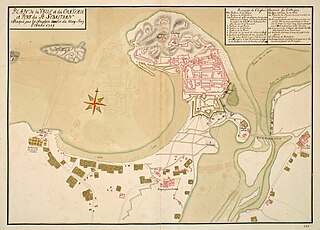
The siege of San Sebastián took place in 1719 during the War of the Quadruple Alliance when French forces under the Duke of Berwick successfully laid siege to the Spanish city of Siege of San Sebastián close to the French border. Combined with the British Attack on Vigo, this led the Spanish to seek peace terms and the war ended with the agreement of the Treaty of The Hague in 1720.
